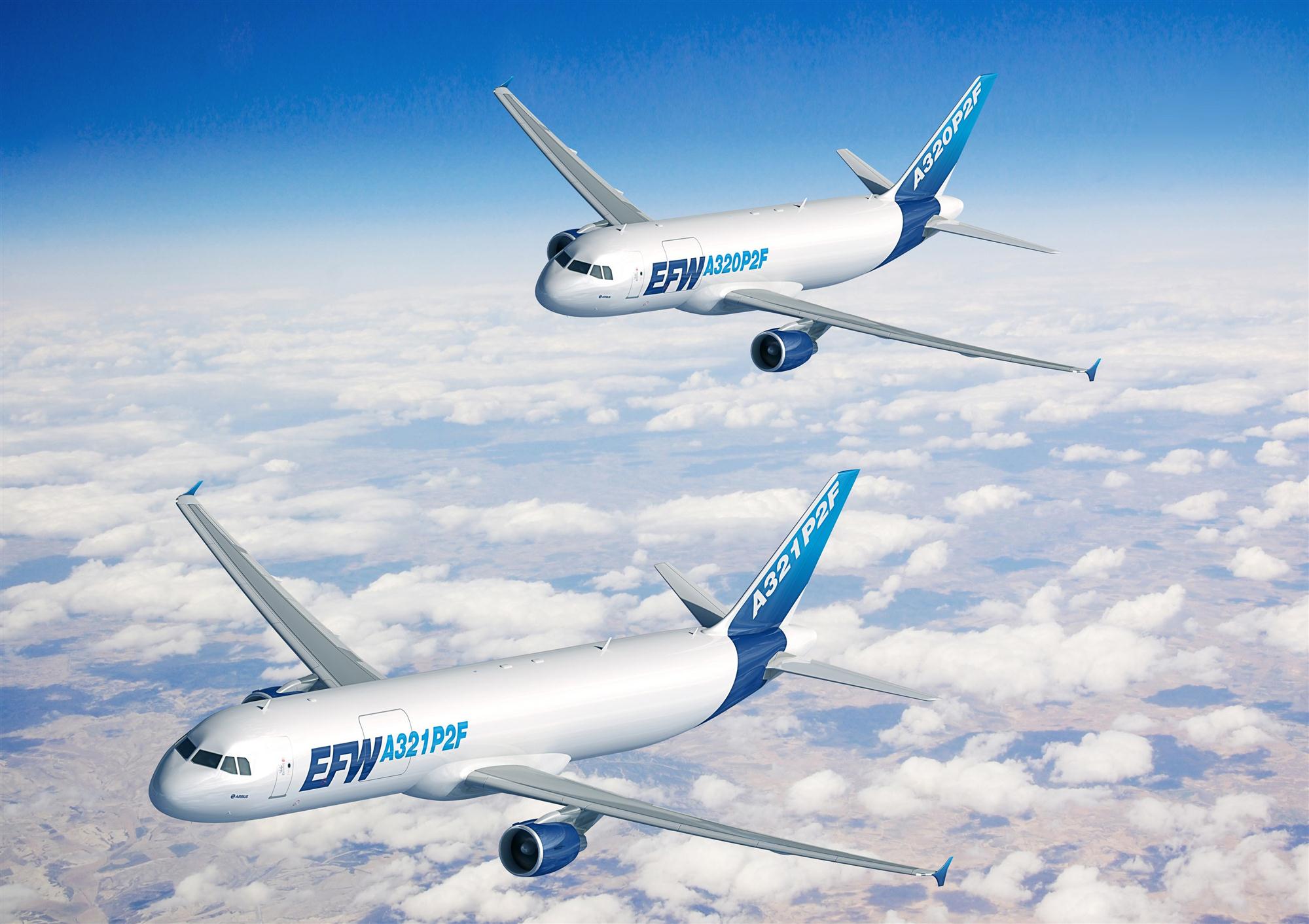Airbus has shifted gears in the freighter conversion arena. Both variants of its Airbus A330 are currently undergoing revamps into all-cargo configuration and, in May, the European aircraft maker and its conversion arm Elbe Flugzeugwerke (EFW) upped the ante in the narrowbody segment with the announcement of upgraded pallet capability on the planned A321 and A320 conversions.
Pundits had been waiting for an announcement regarding the A321, which is widely seen as the natural successor to the Boeing 757. The Boeing plane, which can take 15 main-deck pallets, is enjoying strong demand among express and parcel carriers, but by the time the first converted A321 freighter enters service, much of the viable 757 feedstock is expected to have been used up.
In May, Airbus announced that the A321 would be able to take more pallets than originally planned. Instead of 13 pallet positions and one half on the main deck, the A321P2F will be able to accommodate 14 full-size units, plus 10 LD-3 positions on the lower deck.
“Combined with the unique containerized lower deck, this provides the equivalent volume of 17 AAY full size main deck containers compared to the 757 freighter’s 15,” said Wolfgang Schmid, vice-president of sales and marketing at EFW.

Airbus has stressed the ability of its A320 and A321 models to take containers in the lower hold, which makes them unique among narrowbody aircraft.
Oliver von Tronchin, the aircraft manufacturer’s head of freighter marketing, remarked that the upgraded plans for the A320 are going to produce a narrowbody freighter with 10 full main deck positions plus room for a turned pallet.
“The A320 now offers even a bit more volume than the 737-800,” said Schmid.
All along, the A320 has been viewed as a potential rival to the smaller 737-400. According to von Tronchin, going against the 737-800 brings an advantage for the Airbus plane.
“With the freight industry realizing that 737-800 feedstock is expensive, the A320P2F will offer a very competitive alternative,” he stated.
By the same token, observers have commented that feedstock for the A321 is scarce and rather pricy.
In April, EFW, a subsidiary of Airbus and Singapore-based ST Aerospace, inducted the first A330-200 aircraft for conversion into all-cargo configuration. The plane, which will operate for EgyptAir, was flown to EFW’s base in Dresden by the chairman of the Middle Eastern carrier himself. Egyptair is the launch customer for the A330-200P2F, with two planes on order.
The A330-200 job complements the freighter conversion programme for A330-300s, which kicked off a year ago and is nearing the completion of the first aircraft, one of four A330-300s that DHL signed up for at the launch of the programme. According to EFW, the first flight of the inaugural A330-300P2F is expected in November.
DHL, the launch customer for the type, doubled its orders for A330-300 conversions in June, when it signed an agreement with ST Aerospace to turn four more planes into freighters. The integrator holds options on an additional 10 conversions of the type.
Airbus is upbeat on the potential for the A330, pointing to strong demand for mid-sized widebodies, especially to operate on trunk routes for express and parcel carriers. Boeing’s 767 conversion programme, which had gone dormant a few years ago, is back in full swing, and operators have reported challenges getting hold of 767 feedstock for conversions.
According to von Tronchin, Airbus has seen increased demand for the A330-300P2F. He noted that it has 18% more volume than the 767 freighter. Airbus and EFW plan to run 18-24 slots a year for the model, the same volume as planned for A320/321 conversions.
As with A321s and 737-800s, it will be a while before feedstock prices reach levels to give significant momentum to converted A330-300s. As one industry executive noted, the A330-300 is a good aircraft, but planes coming to the end of their life in passenger service are still rather pricy for cargo operations. On the other hand, the rapid growth in e-commerce may force some players’ hand sooner than they would like.
By Ian Putzger
Air Freight Correspondent | Toronto